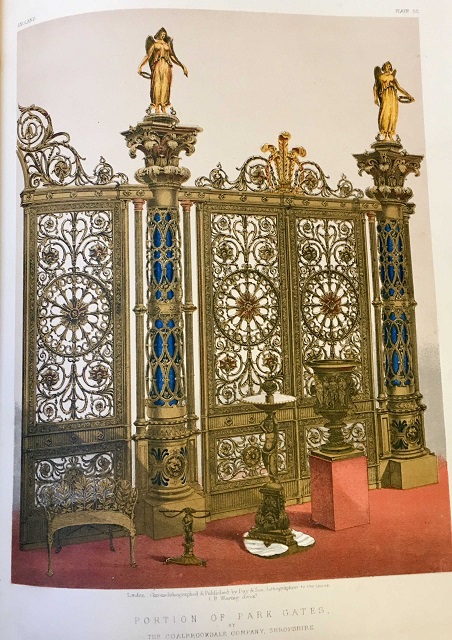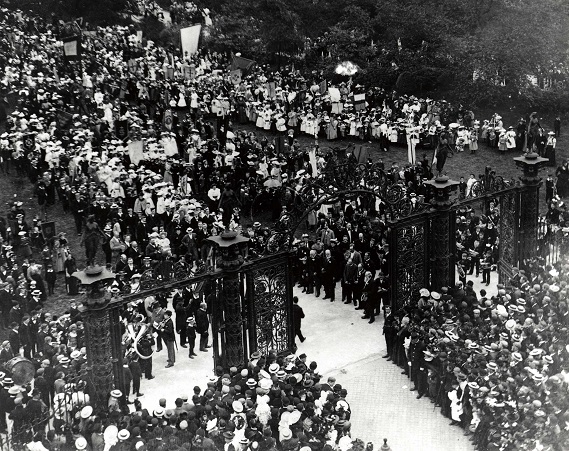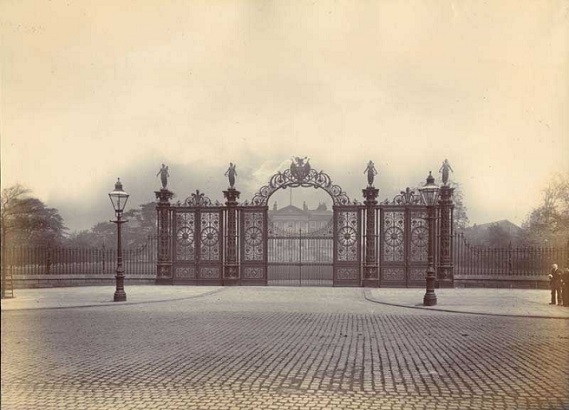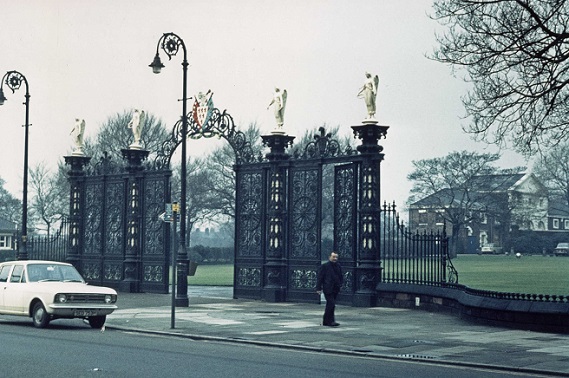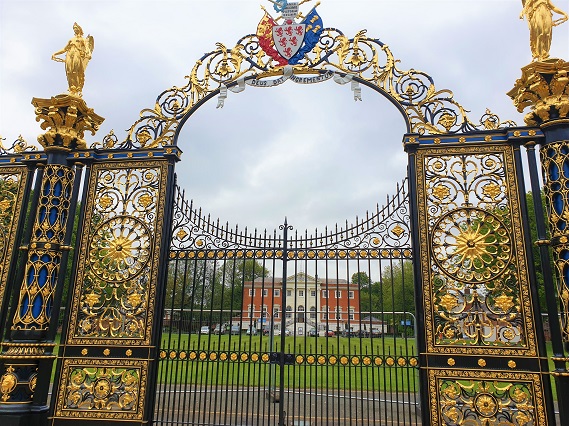Warrington Town Hall, on the north side of Sankey Street, was designed and built in 1750 by James Gibbs as an elegant Georgian mansion, known as Bank Hall. It was a home for local merchant Thomas Patten and his family.
As more traffic started to use Sankey Street, the Patten family built a high brick wall in front of the building to give them privacy. But when the council bought Bank Hall in 1870 and turned it into Warrington’s new town hall, local people started to complain that they were paying rates which helped to look after the building – but they couldn’t even see it!
So Frederick Monks, one of the town’s earliest councillors, came up with an idea. As a local ironmaster, he could give the town hall a fitting entrance.
Frederick Monks
As a young man, Monks was an apprentice of P P Carpenter of Cairo Street. He worked his way up and then helped to create Monks Hall and Company, which became one of the country’s leading manufacturers of iron and steel. Through his business, he heard about a magnificent pair of iron gates made by the famous Coalbrookdale works at Ironbridge.
Queen Victoria and the Oliver Cromwell statue
The gates were made for the International Exhibition of 1862, and then intended for Queen Victoria’s Sandringham home in Norfolk. The Queen was meant to see them for the first time at the exhibition but, clearly visible through the gates, was a statue of Oliver Cromwell.
As Cromwell had signed King Charles I’s death warrant, royalty didn’t like him very much. The Queen’s courtiers realised she wouldn’t be amused to see the statue, and diverted her.
